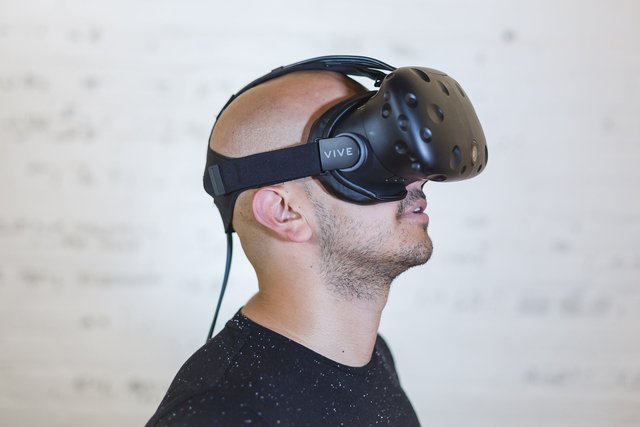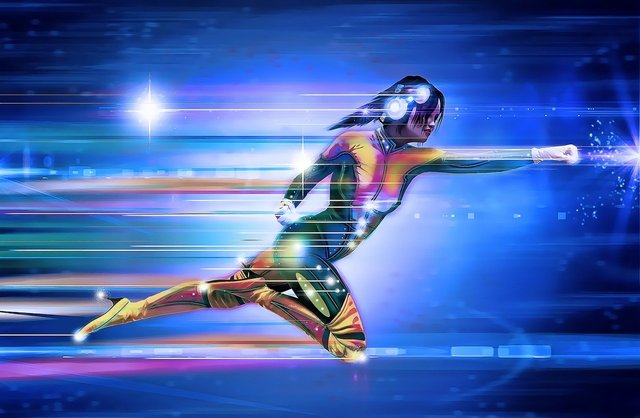
In the beginning there were simulators and games, in the future there will be much more than that and it is near.
Back in the late 1960s the first appearance of VR emerged: The ‘Sword of Damocles’ (that was the nickname for the machine). It was the first version of a VR/AR headset and it consisted of a large contraption that hanged from the ceiling and fit into a person’s head. The contraption was developed by Ivan Sutherland with the help of some of his students and would go on to be a foreshadow of the things to come.
After this moment, many different players took notice of the possibilities this technology could offer, one of the most remarkable ones being NASA. In the 1980s NASA developed a system called Virtual Interface Environment Workstation (VIEW for short) which had better design and gloves for more haptic feedback; at this stage the tech was still just being explored but the path was set and vision was clear: this had the potential to change the world as we sense it. The VR/AR/MR technologies have been used mainly for training simulations in the military with state-of-the-art installations and in other non-public scenarios where the equipment is too expensive and the application is not common.
In the last decade, as technologies seem to be advancing more and more, so has the VR/AR/MR movement that started so long ago. The first thing that comes to everyone’s mind when this subject is mentioned is games, this is the industry that brought the VR tech to mainstream media and the one that had the most potential just a few years ago.
The appearance of the Xbox Kinect camera, Augmented Reality card games, the Oculus Rift, HTC Vive, 360 video with headsets, and many other technologies have created an impulse within the dev world to find what it is that could be the trigger to finally launch the industry to its true potential; but there has been a common factor that has not yet allowed this to happen: most companies that have put heart and soul into this have been game developers, narrowing the field of view to entertainment.
More companies need to be interested in developing this technology to the point where it becomes a standard in the general public’s everyday life. The potential has been shown to excite everyone. Imagine a world where the Google Lens tech is implemented into a contact lens, where people can watch movies come to life around them and be part of a thrill, where people can scan their bodies to check some health factors, where an officer chasing a felon can have a most efficient route drawn for him before his eyes, where a triathlon runner can have his vital signs pulled up to make sure he is in optimum condition, the possibilities are endless and not just limited to entertainment and gaming.

With 5G on the horizon it is getting even more exciting. The 5G network has the potential to give VR/AR/MR the impulse it needs to finally blow into mainstream, but why?
5G mobile networks will have faster and more stable connections, as it becomes a standard and the accessibility to it increases, so will the public’s access to previously more expensive or unreachable technologies. The main focus for this new development will be video, as it has become the most consumed media format on the web (unsurprisingly taking all the new streaming services into account), but VR and AR will benefit immensely from this too.
A report by Intel suggests that while 90% of the content consumed with 5G will be video it also means that the experience of the user will change too, it will not just be watching a video online but immersive technologies will finally be a part of the experience and a big movement in all aspects of the virtual world could come by 2025.
Latency, which is defined in engineering as the time lapse between a stimulus and a response, will have great benefits too. One of the main inconveniences developers have at the moment they get on a new project is to avoid the consumer from getting dizzy while using their program, this can be caused in a large manner by high latency during play. With 5G networks the latency will be reduced (ideally) to a minimum which would allow more people to feel more comfortable with using the technology.
This is a wake-up call for the tech industry to gear up and turn up the heat to cook some massive, revolutionary inventions to make our lives better. It is imminent that a change will come and the first ones to dig in will take part in history as it is being made.
Hope you enjoyed reading this far, have a great day!
S.